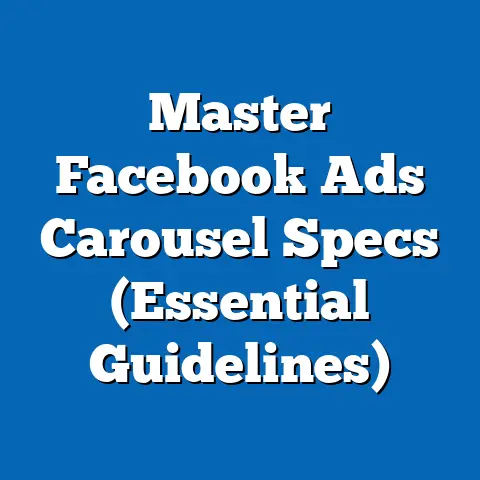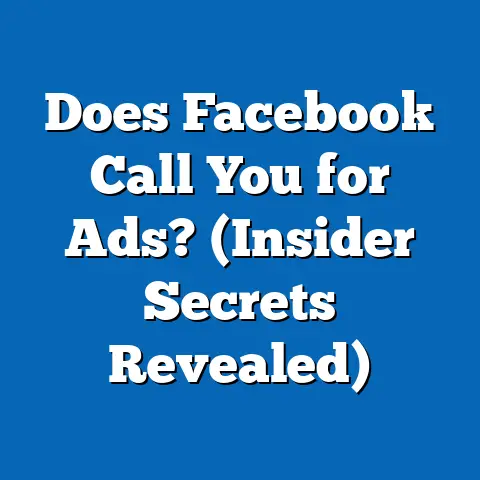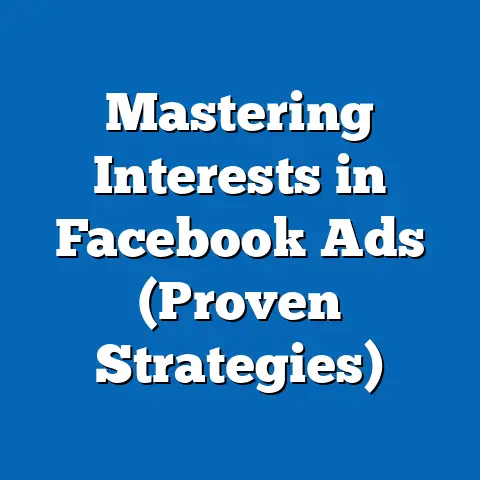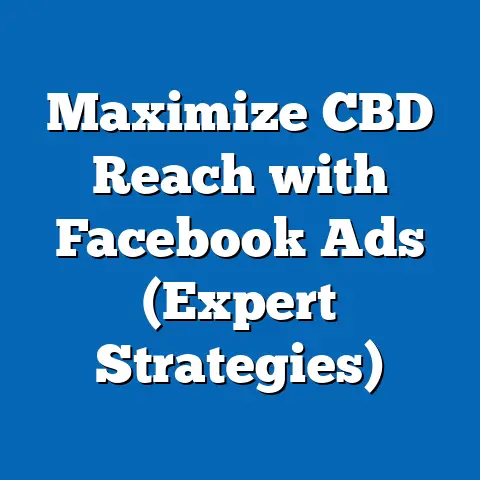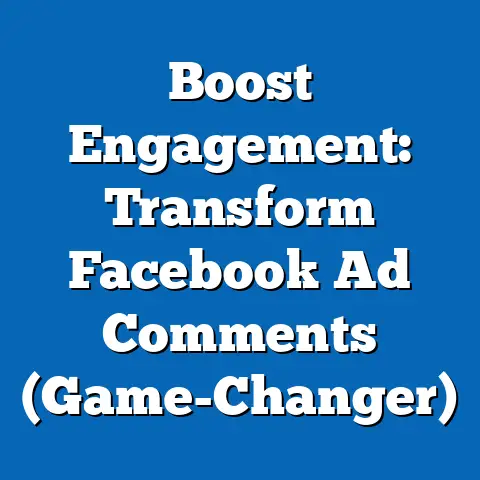Unlock Effective Facebook Ad Targeting (Proven Strategies)
Have you ever heard the story of Odysseus and the Trojan Horse? It wasn’t brute force that won the day, but clever planning and precise execution. Odysseus knew exactly who he needed to target and how to get past the seemingly impenetrable walls of Troy. In the world of Facebook advertising, the same principle applies. You can have the most visually stunning ad and the most compelling offer, but if you’re not showing it to the right people, it’s like shouting into the void. That’s why effective Facebook ad targeting is absolutely crucial for achieving marketing success. In this guide, I’ll walk you through proven strategies to unlock the full potential of your Facebook campaigns by reaching the audience that truly matters.
Understanding Facebook Ad Targeting
Facebook ad targeting is the art and science of showing your ads to the people most likely to be interested in your product or service. It’s the strategic process of defining your ideal customer and then using Facebook’s powerful tools to find and engage with them. In today’s digital landscape, where attention spans are shorter than ever and competition is fierce, targeting is no longer a luxury – it’s a necessity.
The evolution of Facebook’s advertising platform has been remarkable. What started as a simple way to promote pages has transformed into a sophisticated ecosystem capable of delivering highly personalized ads to billions of users. This is largely due to the vast amount of data Facebook collects on its users, from their demographics and interests to their online behavior and purchase history.
And the proof is in the pudding. According to a recent study, targeted ads are twice as likely to generate conversions compared to non-targeted ads. That’s a massive difference that can significantly impact your return on investment (ROI). Think about it: would you rather show your ad to a random group of people, or to a carefully selected audience who are already interested in what you have to offer? The answer is obvious.
Key Takeaway: Facebook ad targeting is essential for reaching the right audience and maximizing your ROI. Understanding the platform’s capabilities is the first step towards creating successful campaigns.
The Importance of Audience Segmentation
Audience segmentation is the process of dividing your target market into smaller, more defined groups based on shared characteristics. Think of it like sorting a box of mixed candies – you wouldn’t offer the whole box to someone who only likes chocolate, would you? Instead, you’d pick out the chocolates and offer them that specific segment.
Why is audience segmentation so important? Because it allows you to create more relevant and personalized ads that resonate with each group. When you understand the specific needs, interests, and pain points of each segment, you can tailor your messaging, visuals, and offers to speak directly to them.
There are several types of audience segments you can use on Facebook, including:
- Demographics: Age, gender, location, education, job title, etc.
- Interests: Hobbies, passions, topics they follow, pages they like, etc.
- Behaviors: Online activities, purchase history, device usage, travel habits, etc.
- Custom Audiences: People who have interacted with your business in some way (e.g., website visitors, email subscribers, app users).
- Lookalike Audiences: People who share similar characteristics with your existing customers.
I’ve seen firsthand how effective segmentation can be. I worked with a local bakery that was struggling to attract new customers. By segmenting their audience into different groups (e.g., young professionals, families with children, retirees), they were able to create targeted ads that highlighted specific products and offers that appealed to each segment. For example, they ran ads featuring their artisanal breads to young professionals, while focusing on their kid-friendly cupcakes and cookies for families. The result? A significant increase in website traffic, in-store visits, and overall sales.
Key Takeaway: Audience segmentation allows you to create more relevant and personalized ads that resonate with different groups of people. By understanding the specific characteristics of each segment, you can tailor your messaging and offers to maximize engagement and conversions.
Proven Targeting Strategies
Now that you understand the importance of targeting and segmentation, let’s dive into some proven strategies you can use to create effective Facebook ad campaigns.
Custom Audiences
Custom Audiences are one of the most powerful targeting options available on Facebook. They allow you to upload your own data, such as email lists, phone numbers, or website visitor data, and create a targeted audience based on those individuals.
The benefits of using Custom Audiences are numerous:
- Re-engage past customers: You can use your email list to reach out to existing customers with special offers, new product announcements, or loyalty rewards.
- Target website visitors: You can create a Custom Audience of people who have visited specific pages on your website, allowing you to retarget them with relevant ads.
- Reach app users: If you have a mobile app, you can create a Custom Audience of people who have downloaded and used your app, enabling you to promote new features or encourage in-app purchases.
Creating a Custom Audience is relatively simple. Just go to the “Audiences” section in Facebook Ads Manager, select “Create Audience,” and choose “Custom Audience.” You’ll then be prompted to select the source of your data (e.g., customer list, website traffic, app activity) and follow the instructions to upload or connect your data.
Remember to always comply with Facebook’s advertising policies and data privacy regulations when using Custom Audiences. Make sure you have obtained the necessary consent from individuals before uploading their data.
Lookalike Audiences
Lookalike Audiences are a brilliant way to expand your reach and find new customers who are similar to your existing ones. They allow you to create an audience that shares similar characteristics with your best customers, website visitors, or app users.
The process of creating a Lookalike Audience is straightforward:
- Choose your source audience: Select the Custom Audience or Facebook Page you want to base your Lookalike Audience on.
- Select your audience size: Choose the percentage of the population you want to target (e.g., 1%, 5%, 10%). A smaller percentage will result in a more closely matched audience, while a larger percentage will increase your reach.
- Select your location: Choose the countries or regions you want to target.
Facebook will then use its algorithms to analyze the characteristics of your source audience and identify other users who share similar traits. These traits can include demographics, interests, behaviors, and more.
I’ve found that Lookalike Audiences are particularly effective for businesses that are looking to scale their advertising efforts. By targeting people who are similar to their best customers, they can significantly increase their chances of generating leads and sales.
Detailed Targeting Options
Facebook’s detailed targeting options allow you to target users based on their interests, behaviors, and demographics. This is where you can really get granular and define your ideal customer with precision.
Some of the detailed targeting options available include:
- Interests: Target people based on their hobbies, passions, topics they follow, pages they like, etc.
- Behaviors: Target people based on their online activities, purchase history, device usage, travel habits, etc.
- Demographics: Target people based on their age, gender, location, education, job title, etc.
The key to success with detailed targeting is to choose the right combinations of options that align with your target audience. Don’t just throw a bunch of random interests and behaviors together – think strategically about who you’re trying to reach and what they’re likely to be interested in.
For example, if you’re selling a premium coffee subscription, you might target people who are interested in coffee, gourmet food, and luxury goods, and who have a high income level.
Dynamic Ads
Dynamic ads are a game-changer for e-commerce businesses. They allow you to automatically show the right products to users based on their previous interactions with your website or app.
Here’s how they work:
- Upload your product catalog: Upload a file containing all of your products, including their images, descriptions, prices, and availability.
- Set up your ad template: Create an ad template that will be used to dynamically generate ads for each product.
- Define your target audience: Choose who you want to show your ads to (e.g., website visitors, app users, people who have viewed specific products).
Facebook will then use its algorithms to show the most relevant products to each user based on their past behavior. For example, if someone viewed a specific pair of shoes on your website, they’ll see ads for those shoes (or similar ones) when they browse Facebook.
Dynamic ads are incredibly effective for driving sales and increasing conversion rates. By showing people the products they’re most likely to be interested in, you can significantly improve your chances of making a sale.
Retargeting Strategies
Retargeting is the art of reaching out to people who have previously engaged with your brand but didn’t convert. This could include website visitors who didn’t make a purchase, email subscribers who didn’t click on a link, or social media followers who didn’t engage with your posts.
The goal of retargeting is to remind people about your brand and encourage them to take the next step. To do this effectively, it’s important to personalize your messaging and offer incentives that are relevant to their past behavior.
For example, if someone added an item to their cart but didn’t complete the purchase, you could retarget them with an ad that offers a discount or free shipping. Or, if someone viewed a specific product page, you could retarget them with an ad that highlights the benefits of that product and includes a customer testimonial.
Timing is also crucial when it comes to retargeting. You don’t want to bombard people with ads immediately after they visit your website – give them some time to consider their options. A good rule of thumb is to start retargeting after a few days and continue for a few weeks.
Utilizing Facebook Pixel
The Facebook Pixel is a small piece of code that you place on your website to track user behavior. It allows you to see what actions people are taking on your site, such as viewing pages, adding items to their cart, or completing purchases.
The data collected by the Facebook Pixel is invaluable for optimizing your ad targeting. It allows you to:
- Create Custom Audiences: You can create Custom Audiences of people who have taken specific actions on your website, such as visiting a certain page or adding an item to their cart.
- Track conversions: You can track the number of conversions (e.g., purchases, leads, sign-ups) that result from your Facebook ads.
- Optimize your ads: You can use the data collected by the Pixel to optimize your ads for specific goals, such as increasing website traffic, generating leads, or driving sales.
Setting up the Facebook Pixel is relatively simple. Just go to the “Pixels” section in Facebook Ads Manager, select “Create Pixel,” and follow the instructions to install the code on your website.
Key Takeaway: Proven targeting strategies like Custom Audiences, Lookalike Audiences, detailed targeting options, dynamic ads, retargeting, and utilizing the Facebook Pixel can significantly improve your campaign performance.
Measuring Success and Adjusting Strategies
You’ve set up your Facebook ad campaigns with all the right targeting strategies in place. Great! But the work doesn’t stop there. It’s crucial to measure the success of your efforts and adjust your strategies accordingly to improve campaign performance.
Key Performance Indicators (KPIs) that marketers should monitor include:
- Click-Through Rate (CTR): The percentage of people who saw your ad and clicked on it. A high CTR indicates that your ad is relevant and engaging to your target audience.
- Conversion Rate: The percentage of people who clicked on your ad and completed a desired action, such as making a purchase or filling out a form. A high conversion rate indicates that your ad is effectively driving results.
- Cost Per Acquisition (CPA): The cost of acquiring a new customer through your Facebook ads. A low CPA indicates that your ads are efficient and cost-effective.
- Return on Ad Spend (ROAS): The amount of revenue generated for every dollar spent on Facebook ads. A high ROAS indicates that your ads are delivering a strong return on investment.
To analyze these metrics effectively, use Facebook Ads Manager’s reporting tools. These tools allow you to track your KPIs over time, compare the performance of different ad sets, and identify areas for improvement.
For example, if you notice that your CTR is low, you might need to experiment with different ad creatives or targeting options. Or, if you see that your CPA is high, you might need to adjust your bidding strategy or optimize your landing page.
Don’t be afraid to experiment and try new things. The key is to continually monitor your results, learn from your mistakes, and refine your strategies to maximize your ROI.
Key Takeaway: Measuring the success of your Facebook ad targeting efforts is essential for optimizing your campaigns and improving your ROI. Monitor key performance indicators, analyze your results, and adjust your strategies accordingly.
Case Studies of Successful Campaigns
Let’s take a look at a few real-world examples of brands that have successfully utilized effective Facebook ad targeting strategies:
- Dollar Shave Club: This subscription-based razor company used Facebook’s Custom Audiences to target existing customers with personalized offers and new product announcements. They also used Lookalike Audiences to expand their reach to new customers who shared similar characteristics with their best customers. The result? A significant increase in customer retention and acquisition.
- Warby Parker: This online eyewear retailer used Facebook’s dynamic ads to show users the specific glasses they had viewed on their website. They also used retargeting to reach out to people who had added items to their cart but didn’t complete the purchase. The result? A significant increase in sales and revenue.
- Airbnb: This online marketplace for vacation rentals used Facebook’s detailed targeting options to target travelers based on their interests, behaviors, and demographics. They also used Lookalike Audiences to find new hosts who were similar to their existing hosts. The result? A significant increase in bookings and listings.
These case studies demonstrate the power of effective Facebook ad targeting. By understanding their target audience and using the right targeting strategies, these brands were able to achieve remarkable results.
Key Takeaway: Real-world case studies demonstrate the potential impact of proper Facebook ad targeting. Learn from these examples and apply the strategies to your own campaigns.
Conclusion
In conclusion, effective Facebook ad targeting is the key to unlocking the full potential of your marketing efforts. By understanding the platform’s capabilities, segmenting your audience, and using proven targeting strategies, you can reach the people who are most likely to be interested in your product or service.
Remember to measure the success of your campaigns, analyze your results, and adjust your strategies accordingly. And don’t be afraid to experiment and try new things. The world of Facebook advertising is constantly evolving, so it’s important to stay up-to-date with the latest trends and best practices.
So, take action on the strategies outlined in this guide. Refine your approach based on data and results. And watch your Facebook ad campaigns soar to new heights. Just like Odysseus, with careful planning and precise execution, you can conquer the challenges and achieve your marketing goals.

